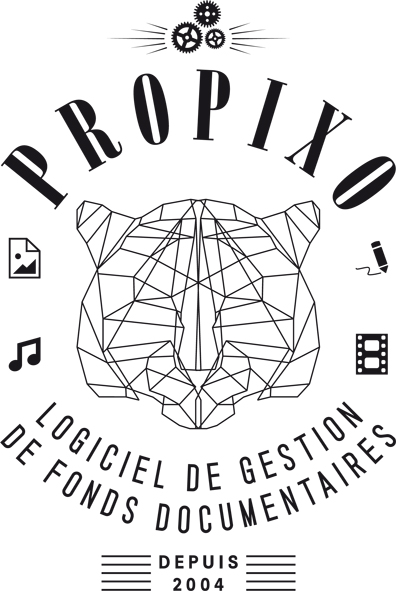This Wednesday, January 29th, 2019, the film “Histoire d’un Regard” by director Mariana Otero was released in theaters. This first-person documentary searches, with much emotion and precision, the work of a brilliant photographer who has become a myth: Gilles Caron. A must see.
Death often travels slowly through a plain of suffering and despair, before striking. So she mowed down my friends and colleagues Luc Bernard (1), Mark Grosset (2), Michel Baret (3) and Gérard-Aimé (4). At other times, it strikes brutally through a broken artery for Luc Decousse (5), or with a mortar fire for Rémi Ochlik (6) in Syria. Sometimes she stammers: injured on Friday, blown away but saved on Saturday and death on Monday for Lucas Dolega (7).
But death also knows how to camouflage itself, to take a pseudo as it was the case on April 5th, 1970 for the photographer of the Gamma press agency, Gilles Caron went missing. Wounded, gobbled up, exploded, deceased, we are in the concrete, in the real, but he has disappeared…
Disappeared, it is the door left ajar to the beyond through which hope sneaks. Terrible. Unimaginable the shock felt by Marianne Caron, his young wife mother of their two little girls. Also unimaginable today is the silence that surrounded this fact drowned in the disappearance of a dozen other journalists in the Cambodian conflict. Some news in the press, but Gilles Caron is not yet the star, the James Dean of photojournalism that he has since become, thanks to the work of the Gilles Caron Foundation, to that of the historian Michel Poivert, and to this movie. Books and exhibitions have taken his immense talent out of the professional circle to reach a larger audience.
But in 1970, a press photographer, reporter photographer – the American term photojournalist is not yet familiar – is considered a technician, an information craftsman. Colleagues from the written and audiovisual press often ignore the reality of this work and that of photographic agencies. And then, let us dare say it, there is then like an embarrassment around the wounded and killed in the exercise of the profession. Being injured or killed is not professional misconduct, but almost. We are far from celebrating their memory at the Bayeux memorial!
It was only by a judgment of September 22, 1978 that “the court said and declared that on April 5, 1970 on colonial road No. 1 Phnom Penh – Saigon (Cambodia) died Gilles Edouard Denis Caron”. There is the pain of the family, of Marianne Caron in particular, but behind the machismo of the time particularly prevalent in the press, those who founded with Gilles Caron the press agency Gamma, the Hubert Henrottes, Hugues Vassal , Raymond Depardon are destabilized. This disappearance and the uncertainty of Caron’s fate weighed heavily in May 1973 in the conflict between associates which led to the rebellion of the photographers and to the departure of Hubert Henrotte and the birth of a new agency: Sygma.
Raymond Depardon, certainly the most affected, remained with Gamma, which he left to join Magnum in 1978, the year when Gilles Caron was declared officially deceased. It is not a coincidence.
Floris de Bonneville, who was the editor and friend of Gilles Caron, testifies to Depardon’s grief, as did Jérôme Hinstin his assistant. “When I arrived at Gamma three years after his disappearance, there was still a kind of constant worry. I did not know Caron personally but I remembered seeing him working at the university of Nanterre in 68. I could see this guy not very tall, with curly hair, very lively, like a squirrel. Depardon spent years looking for information to find out what had happened to him. In vain. (8) ”
50 years later, the emotion is still present for all those who have known the photographer from near and far. Mariana Otero, the director of the film “Histoire d’un regard” was touched as soon as she leafed through the “Scrapbook”, the first work produced by the Gilles Caron Foundation in 2012. By bringing together all – or almost all – the films and contact sheets, the Foundation has updated the incredible talent of the photographer. Of the 36 views in each film, almost all of the images are good. There is little waste.
The work collected allowed Mariana Otero to build a film on some of Gilles Caron’s best known photos. Mariana’s camera explores Biafra, the six-day war in Israel and of course the iconic photo of Daniel Cohn-Bendit better known in 68 by the serigraphed posters of the Atelier des Beaux-Arts than by the little quarter-page published in Paris Match. With this documentary film, we follow step by step Gilles Caron, who arrived at the same time as the Israeli troops in Jerusalem. Professional photographers may find this anecdotal, but this lively approach gives flesh to these archives, and brings to life a great reporter for the public.
Michel Puech in The Eyes of Photography february monday 3 2020
(1) Luc Chiche dit Luc Bernard born in 1947 in Algiers and died in Paris on August 22, 2002, is a French journalist, writer and director. He collaborated in Combat, La Croix, L’Evènement du Jeudi and Marianne.
(2) Mark Spencer Grosset was born on January 7, 1957. He is the son of Barbara and Raymond Grosset who relaunched the Rapho agency after the war. Mark Grosset worked in photo agencies Imapress, Sipa Press, La Compagnie des Reporters, Black Star France. He became director of the Rapho agency before founding Mark Grosset Photographies. He died in 2006.
(3) Michel Baret born October 2, 1946 died Wednesday August 29, 2012 He was a journalist, press photographer since 1966, co-founder of the NS Rush news agency and member of the Rapho agency. Its archives are distributed by the Gamma-Rapho agency.
(4) Gérard Bois dit Gérard-Aimé was born on September 18, 1943 in Livron (Drôme) and died on May 11, 2018 in Valence (Drôme). Photojournalist, he collaborated with the agency APIS, at the Boojum Consort, he was co-founder of the press agency Fotolib (1972-1980) and Rapho.
(5) Jean-Baptiste Guigiaro dit Luc Decousse, journalist for La Marseillaise.
(6) Rémi Ochlik, born October 16, 1983 in Thionville (France) and died February 22, 2012 in Homs (Syria). Photojournalist co-founder of IP3 Press.
(7) Lucas von Zabiensky Mebrouk Dolega was born on August 19, 1978, photojournalist at the European Pressphoto Agency (EPA). On January 14, 2011, he covered a demonstration in Tunis when he was hit by a tear gas canister. Transported to the hospital, he died on January 17. He is buried in the Père-Lachaise cemetery (44th division).
(8) Interview with Jérôme Hinstin November 12, 2019
Dernière révision le 15 juin 2021 à 10;52 par Rédaction d’a-l-oeil.info




